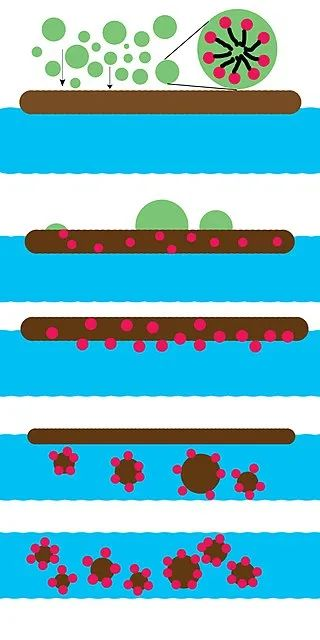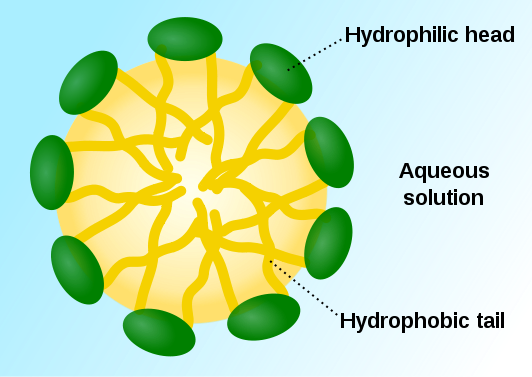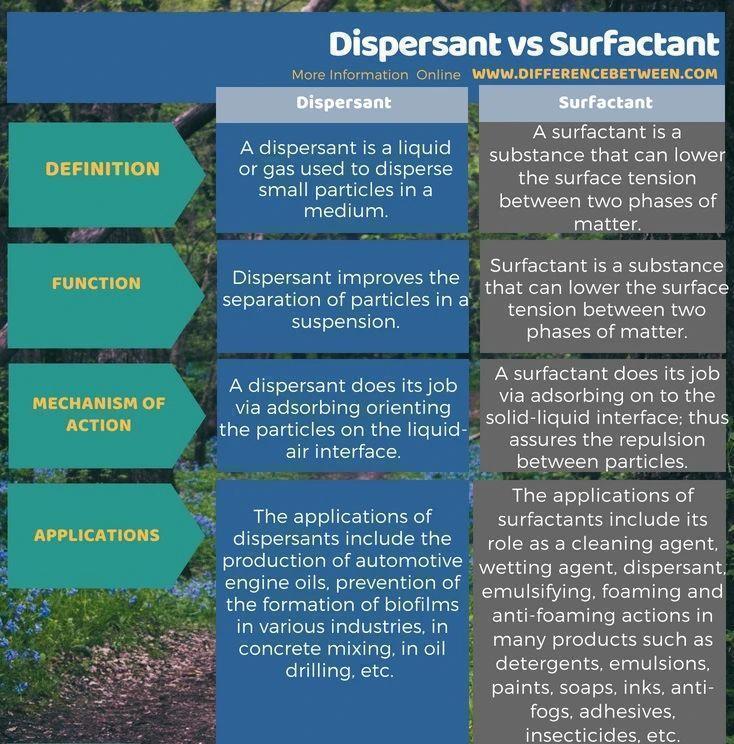The main difference between dispersants and surfactants lies in the fact that dispersants can improve particle separation in suspensions, while surfactants are substances that can reduce the surface tension between two phases of matter.
Dispersants are a form of surfactant. However, not all surfactants are dispersants. Apart from acting as dispersants, surfactants can also serve as detergents, wetting agents, emulsifiers, and foaming agents. Typically, they are organic compounds.
Dispersants are liquids or gases used to disperse small particles in a medium. They are also known as "plasticizers." They exist in two forms: non-surfactant polymers and surfactants. These substances are added to suspensions to prevent the formation of particle clusters. This improves the separation of particles and prevents settling. In most cases, dispersants consist of one or more surfactant substances.

The mechanism of action of dispersants
These substances are used in various applications including the production of automotive engine oil, prevention of biofilm formation in various industries, reducing the use of large amounts of water in concrete mixing, and breaking down solids into particles in oil drilling.
Surfactants are substances that can reduce the surface tension between two phases of matter. They can lower the surface tension between two liquids, between a gas and a liquid, or between a liquid and a solid. Most of the time, they are amphiphilic organic compounds. This means that these substances contain both hydrophilic and hydrophobic regions within the same molecule. Therefore, they simultaneously possess water-soluble and water-insoluble regions.

The hydrophilic and hydrophobic regions of surfactant molecules
Applications of surfactants include their use in many products as detergents, wetting agents, dispersants, emulsifiers, foaming and defoaming agents, such as detergents, emulsions, paints, soaps, inks, defoggers, adhesives, insecticides, etc.
Dispersants are liquids or gases used to disperse small particles in a medium. Surfactants are substances that can reduce the surface tension between two phases of matter. However, dispersants are a form of surfactants. These two substances have different functions. This means that dispersants prevent the formation of particle clusters in suspensions, while surfactants reduce the surface tension between two liquids, between a gas and a liquid, or between a liquid and a solid. This is the main difference between dispersants and surfactants. Furthermore, dispersants act by orienting the particles adsorbed at the liquid-gas interface, while surfactants act by adsorbing at the solid-liquid interface. Thus, ensuring repulsion between particles.
The following table provides more detailed information about the differences between dispersants and surfactants.

Summary - Dispersants vs. SurfactantsDispersants are a form of surfactants. The difference between dispersants and surfactants lies in the fact that dispersants can improve particle separation in suspensions, while surfactants are substances that can reduce the surface tension between two phases of matter.